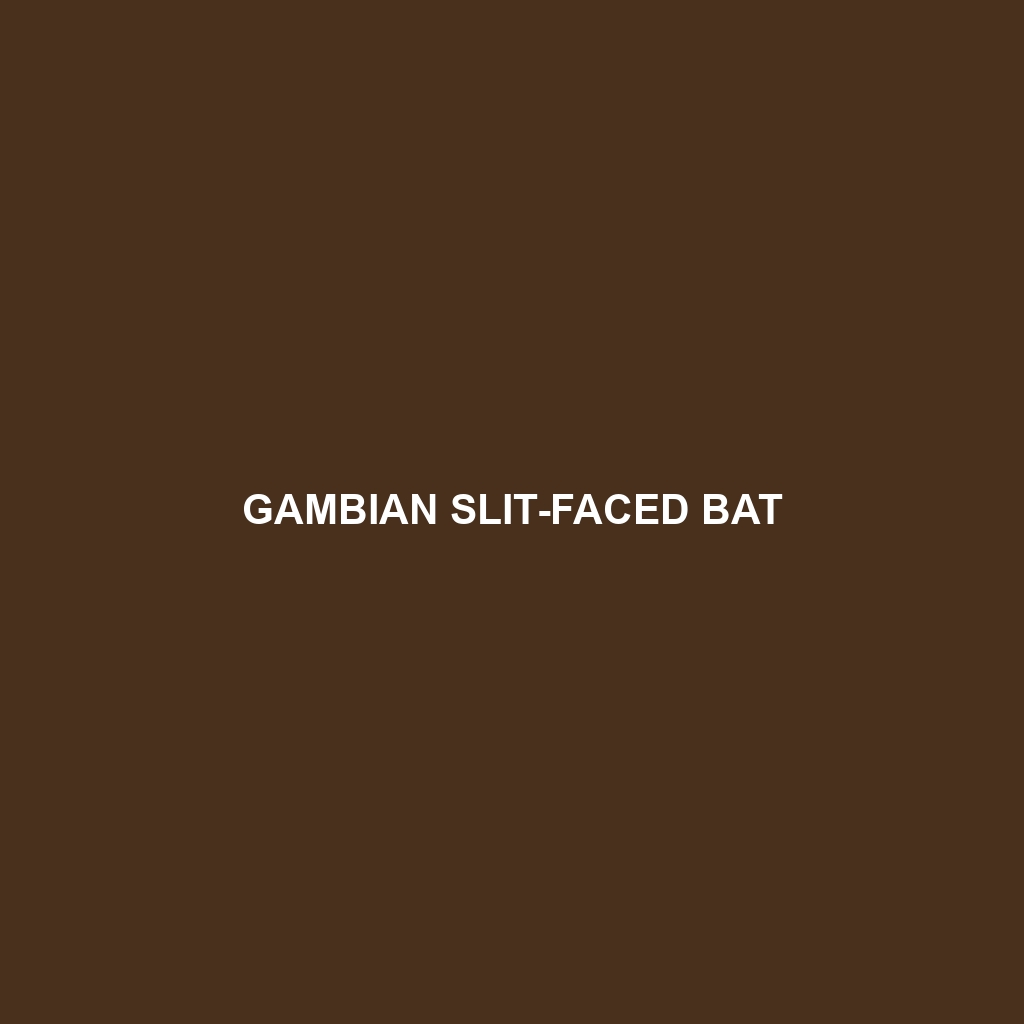Andersen’s Slit-faced Bat
Common Name: Andersen’s Slit-faced Bat
Scientific Name: Nycteris andrewsiana
Habitat
Andersen’s Slit-faced Bat is primarily found in the tropical forests of Central and West Africa, including countries such as Cameroon, the Republic of Congo, and the DRC (Democratic Republic of the Congo). This bat species thrives in humid environments and dense vegetation, often roosting in tree hollows or amongst leaf litter, which offers protection from daytime predators and extreme weather.
Physical Characteristics
Andersen’s Slit-faced Bat is a medium-sized bat, typically measuring between 10 and 13 centimeters in length. Its fur is generally dark brown to gray, with a lighter underbelly. One of its most distinctive features is the unique slit-like opening on its face, which assists in echolocation. The bat’s large ears and elongated snout further enhance its sensory capabilities, making it effective at foraging in its dimly lit environment.
Behavior
This species exhibits nocturnal behavior, roosting during the day and emerging at dusk to search for food. Andersen’s Slit-faced Bat is known for its agile flight patterns and proficient hunting skills, using echolocation to navigate through dense foliage. Socially, these bats can often be found roosting in small groups, which provides warmth and social interaction.
Diet
The diet of Andersen’s Slit-faced Bat primarily consists of insects, particularly moths and beetles. This bat employs a foraging technique where it captures prey mid-air, making it an effective predator in its habitat. The bat’s feeding habits play a crucial role in controlling insect populations, highlighting its significance in the ecosystem.
Reproduction
Breeding for Andersen’s Slit-faced Bat typically occurs during the wet season, with females giving birth to a single pup after a gestation period of about 60 days. Mothers are highly attentive, nurturing their young until they are capable of flying and foraging on their own. This maternal care is vital for the pup’s survival in the competitive environment of tropical forests.
Conservation Status
The current conservation status of Andersen’s Slit-faced Bat is classified as Vulnerable by the International Union for Conservation of Nature (IUCN). The primary threats include habitat loss due to deforestation and human encroachment. Conservation efforts are critical to ensure the survival of this unique bat species and its habitat.
Interesting Facts
– Andersen’s Slit-faced Bat is named after the Scandinavian zoologist M. Andersen, who contributed significantly to the study of bats.
– This bat species exhibits a unique roosting behavior, often preferring small cracks in trees and under leaves for protection against predators.
Role in Ecosystem
Andersen’s Slit-faced Bat plays a vital role in its ecosystem, acting as a natural pest controller through its diet of insects. Its interactions with pollinators also contribute to the healthy functioning of its environment. By maintaining insect populations, this bat helps support plant health and biodiversity in its tropical forest habitat.
